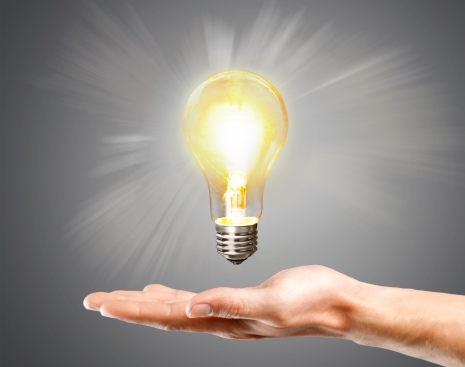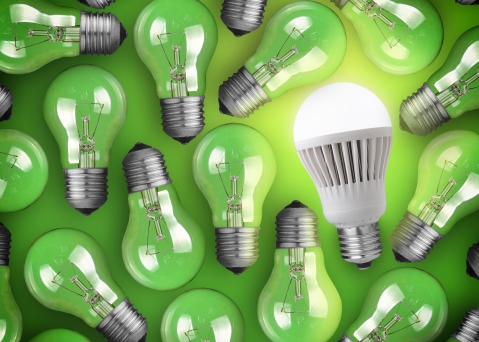 Updating your lighting to LED fixtures will save energy costs. You will have lower electrical bills and the LED bulbs will last much longer than incandescent or halogen lights. LED lighting will increase the value of your home when the lights are used in permanent fixtures.
Updating your lighting to LED fixtures will save energy costs. You will have lower electrical bills and the LED bulbs will last much longer than incandescent or halogen lights. LED lighting will increase the value of your home when the lights are used in permanent fixtures.
There are no filaments in LED bulbs. Light is emitted by electrons passing across a semiconductor diode with a reflector. The diodes are capped with a clear or tinted lens. LED lights give off very little heat compared to standard incandescent bulbs. LEDs usually do not contain glass or other hazardous materials.
Getting started
Take a long look at your home and analyze the following:
- What rooms, including the kitchen, use the most lights?
- What is the lighting cost on your electric utility bill?
- What is your budget for replacing lights?
The first question is easy. Your kitchen and other work areas probably use the most lights. You may have halogen bulbs in the ceiling or a fluorescent light overhead. Other rooms may have overhead lights or lamps. Lamp bulbs are the easiest to replace with LED bulbs. They give off the same illumination or lumens.
Estimating the lighting cost in your utility bill is a little more difficult. Approximate the cost by the number of hours you illuminate your home multiplied by the cost per kilowatt hour. This is a vague estimate but it will help with LED versus incandescent light costs evaluation.
Comparisons
There are several charts available that compare LEDs with CFL or spiral lights and standard incandescent lights. A standard 60-watt incandescent light uses only 10 watts with a LED bulb. The CFL uses about 14 watts. The incandescent bulb will last for about 1,200 hours and the CFL is good for 10,000 hours while the LED equivalent is good for 50,000 hours.
The LED bulb will use about 500 kWh of power over 50,000 hours while the incandescent bulb will have been replaced up to 40 times and burned up 3,000 KWh of power. This gives you a general idea of the difference. Since LEDs use less power, they are ideal for solar-powered homes and fixtures, including outdoor lights.
Types of LED fixtures
LED bulbs come in all sizes and configurations. Colors are available from standard bright white to pink and yellow tones. LED fixtures, including chandeliers, work with dimmers to control the amount of light in a room.
Standard screw bulbs fit into any traditional lamp or lighting fixture. Pin sockets are also available. LEDs work great for track and recessed lighting. LEDs fit into tracks and modern task light hanging fixtures in kitchens and other work areas. Basic bright white light is good for kitchens and workplaces while softer lights may be used in living and dining rooms.
Candle flame shapes, round globes, and tube lights can be used anywhere. Modern lamps are designed exclusively for use with LED bulbs. Swimming and spa pool lights include floating battery-powered LEDs. Special LED strip lights or ribbons fit under cabinets and on walkways for subtle illumination and safety.
Prices have lowered substantially for LED products. They are more popular than ever since they last for many years. A LED bulb with 11 watts and 1100 lumens will replace a 75-watt incandescent bulb for under $10. While it is more expensive than a standard incandescent light, the savings on energy and replacement makes it a good value.
Consider updating your home with LED lighting. This is important for the present and the future as saving energy is necessary for a sustainable lifestyle.
 There are many advantages to using
There are many advantages to using 